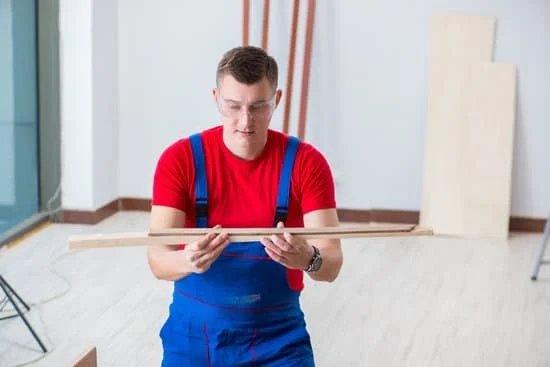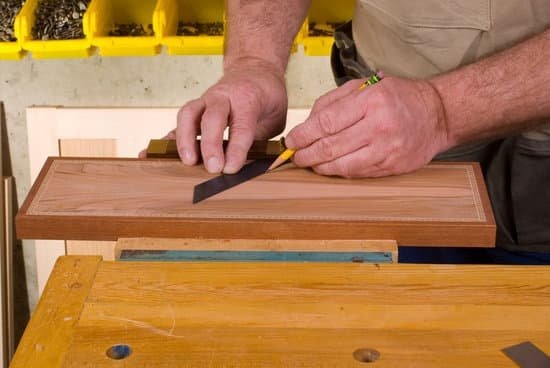Introduction
Colored epoxy is a highly sought after material in the world of woodworking with its ability to create professional-looking and elegant finishes. This special type of resin has incredible strength and durability, allowing for beautiful displays without worry about chips, scratches, or other damage. It also offers excellent resistance to temperature changes and UV radiation, which makes it ideal for both indoor and outdoor use. Colored epoxy comes in a variety of colors such as black, gray, pink and red that can be custom mixed for an array of shades and hues for your project. With this unique product you can craft highly customized pieces that are sure to draw attention from all onlookers.
In addition to its vibrant colors, colored epoxy also demonstrates impressive adhesion properties when used on wood surfaces, which guarantees lasting results. This versatile material can be applied with a brush, roller or airless sprayer and remains flexible enough to allow it to move with the natural curves of a piece while maintaining superior strength and stability. Furthermore, when dried properly colored epoxy forms an impermeable barrier against moisture infiltration so projects don’t have to worry about warping or rot over time.
For DIY woodworkers looking to produce eye-catching designs quickly and easily very few materials offer the sheer level of quality achieved by colored epoxy; making it the perfect choice for furniture projects both simple and complex alike!
What Is Colored Epoxy and Why Is It Used in Woodworking?
Colored epoxy is a popular product used in the woodworking industry. It is a two-part epoxy resin system made up of a base material and a curing agent, which are mixed together to form an adhesive that bonds to wood surfaces. It has been specifically formulated to provide high-strength bonding, so it’s ideal for use with furniture, cabinetry and other finished wooden items where attractive appearance and reliable strength are paramount. It also resists abrasion and moisture better than traditional woodworking glues, making it an excellent choice for outdoor furniture and boats. Furthermore, colored epoxy offers nearly unlimited color options to match any desired look or theme. When properly applied and cured, this product creates permanent bonds that add further protection from wear, tear, moisture and changing temperatures.
Different Types and Colors of Colored Epoxy
Colored epoxy for woodworking is a great way to add a unique and long-lasting finish to any woodworking project. Epoxy can come in a variety of colors, allowing you to customize your woodworking pieces with the color of your choice. Colored epoxy has exceptional adhesion and chemical resistance, making it the perfect material for outdoor furniture, boat decks and other projects that need protection from harsh weather conditions or corrosive substances. With the wide range of colors available, you can find exactly the shade you need for your project.
Common types of colored epoxy for woodworking include two-part epoquik, which usually consists of a hardener and resin that are combined beforeapplication. It’s known for its good durability and strong adhesion qualities; it may also be sanded and stained. Another type is penetrating epoxy, which is designed to penetrate deep into wood fibers in order to provide a solid bond between surfaces while still preserving the natural grains of the wood. This type of epoxy dries clear, so any desired color can still be added on top. UV resistant epoxies are used when working with outdoor projects that will constantly be exposed to direct sunlight; this type resists yellowingand prolongs its lifespan against fading due to UV exposure. High temperature resistant epoxy can withstand temperatures up to 500°F; this type is often used for projects involving engines and exhausts. Finally, glow in the dark epoxies produce an illuminating glow within their depths when charged with light ” this type is growing increasingly popular in many different applications.
Creative Uses for Colored Epoxy
Colored epoxy is a great choice for woodworking due to its versatility, durability, and aesthetic appeal. There are numerous ways that colored epoxy can be used in woodworking projects.
For starters, it is an ideal choice for burning images or designs into wood by painting the design or image onto the desired surface and then applying heat to seal it with the epoxy. This results in an eye-catching piece of art that is both durable and attractive. Additionally, since epoxy comes in many colors, it’s possible to use different colors to enhance the design or image you’re creating.
Epoxy can also be used as a filler or coating to protect and reinforce joints between two pieces of wood. The strength provided by the bond makes it popular for joining furniture components together with extreme accuracy resulting in sturdy joints that won’t warp over time.
Another creative use of colored epoxy is for creating custom laminated pieces such as countertops and tabletops. The result is a smooth, durable surface that will last for years without wearing out due to everyday use.
Finally, colored epoxy can also be used as an artistic medium on its own. It’s incredibly easy to form shapes which could then be used as intricate decoration using multiple colors and/or levels of transparency.
The Benefits of Using Colored Epoxy
Colored epoxy is a great material choice for woodworking, as it is highly durable and offers excellent protection against moisture, UV rays, and other environmental factors. Colored epoxy can be used to seal, stain, or protect various types of woods with great effects. When sealed with colored epoxy, wood surfaces are beautiful and are less susceptible to issues such as cracking and splitting. Other benefits of using colored epoxy for woodworking projects include:
1. Aesthetic Appeal: Using colored epoxy on your woodworking projects will add vibrance and character to the look of your work. Colored epoxy is available in a variety of colors and finishes that you can choose from to best accentuate the underlying material you are working with.
2. Improved Durability: The application of colored epoxy helps enhance the durability of wooden furniture and other objects by protecting them from scratches, chemical damage or decay over time due to exposure to water or sunlight. Many colored epoxies also feature additional features like resistance to heat or fire damage that would further improve their durability over time.
3. Easy Application Process: Colored epoxy is easy to apply using standard varieties available in markets or craft stores; they come either in form of syrupy liquids or thick pastes that could be applied directly onto your project’s surface with little effort needed from your end. It also dries quick enough for you to get back into your project quickly making it an efficient choice for bulk coating purposes too!
Choosing the Right Colored Epoxy for Your Woodworking Project
Colored epoxies are a great choice for woodworking projects as they provide exceptional stability and strength as well as an aesthetically pleasing look. When choosing the right colored epoxy for your project, there are several important things to consider. First, make sure to select a color that’s compatible with the type of wood you are using. Different species of woods require distinct formulations and colors of the epoxy in order to create optimal results. Make sure to purchase an epoxy that meets your desired aesthetic while also providing protection from warping, cracking, and decay due to humidity and other environmental factors.
Furthermore, choose an epoxy that provides superior adhesion properties so that it won’t wear away over time or become loose from the wood surface or any other parts of the structure. The surface should be appropriately prepared beforehand so that all surfaces are clean and free from debris for maximum bond strength between the individual pieces. It is also important to use adequate amounts of colored epoxy to avoid overstretching and ensure a snug fit between parts without producing excess sap or resin buildup on the structure’s surface. Additionally, when selecting an epoxy product make sure it complies with VOC (Volatile Organic Compound) standards in order to avoid adverse health effects generated by fumes released during application or drying processes. With these considerations in mind, you can easily find the perfect colored epoxy for your woodworking project!
Step-by-Step Guide to Applying and Curing Colored Epoxy
1. Select a colored epoxy resin product designed for use with woodworking projects. Make sure the product you choose is designed to be colored, as many epoxies are not.
2. Once you have chosen your product, prepare the work area by cleaning the wood surface and making any necessary repairs or sanding that may be required prior to application.
3. Measure out the resin and hardener ratios according to package instructions, precisely measuring each component in its own separate container before mixing them together thoroughly in a third bucket.
4. Now it’s time to apply the epoxy to the wood surface”use either a brush or a foam roller for an even finish – ensure that all air bubbles and pockets of epoxy have been removed from the surface during this process, giving the treated object a flawless appearance.
5. Next, cover the area with wax paper or plastic sheets and let it sit undisturbed overnight so that it can cure properly – approximate curing times vary based on temperature and humidity levels in your environment, consult specific manufacturer instructions if available to determine exact curing times for your product
6. Finally remove protective coverings in order to reveal a maximum clarity of color within your finished project – admire your handy work!
Professional Tips for Working with Colored Epoxy
Using colored epoxy for woodworking projects can create a beautiful and unique look. However, it’s important to remember that epoxy is a powerful adhesive and can be tricky to work with. Here are some professional tips to ensure successful results when working with colored epoxy in woodworking:
• Ensure the wood surface is free of dust and debris before applying the epoxy. Not cleaning the dust and debris can lead to an uneven application.
• If you’re using an optical-grade colorant, it should be combined with two-part epoxy first before being added to your resin. This will ensure that all particles will stay dispersed evenly through the mixture.
• Make sure you mix the epoxy thoroughly so that there are no air bubbles or other inconsistencies in the mixture. If air bubbles are present, they can cause weak spots in your finished product if not addressed prior to curing.
• Test out colored epoxy finishes on scrap pieces of wood first before applying them to your final project so that you can get a better idea of how it will look in the end and make any necessary adjustments if needed.
• Allow plenty of time for the epoxy to fully cure so that you get optimal results from your project; usually 24 hours or more depending on what type of epoxy you are using.
• Protect yourself during application by wearing protective goggles and gloves as exposure to uncured resin may cause skin irritation or other health problems. Taking simple precautions such as these will ensure a successful outcome while also keeping you safe during work!
Common Issues When Working with Colored Epoxy and How to Fix Them
One of the most common issues when using colored epoxy for woodworking is bubbling and discoloration. This occurs when air gets trapped in the mixture or when too much hardener is added. To fix this problem, make sure to mix the components correctly and to mix it thoroughly. Ensure that each component is completely blended and that no chunks remain, as they will create uneven color as well as pockets of air that can cause bubbling. Additionally, use an appropriate amount of hardener according to the manufacturer’s instructions. If necessary, add extra hardener sparingly until the desired consistency is achieved. Lastly, avoid over-mixing: too much mixing can generate heat which can cause bubbling or discoloration in your mixture.
Conclusion
Colored epoxy can be a valuable tool for any woodworker looking to create professional looking projects. Its wide range of uses, from filling cracks to coating the surface of a piece, make it an invaluable asset in any woodshop. The use of colored epoxy also provides numerous advantages such as durability, heat and water-resistance, strength and more. Additionally, colored epoxy is relatively easy to apply and available in multiple colors, allowing for personalized custom looks that you won’t achieve with traditional finishes.
When searching for the perfect colored epoxy for your project, you may consider factors like type of product and application methods; however, price should remain one of your top priorities. While there are several varieties of colored epoxy on the market at different prices, investing in higher grade products will result in a better finish for your project – meaning less time spent on sanding and polishing. High quality epoxies are typically thicker than cheaper options and will require fewer coats to get the desired look. Additionally they tend to yield a harder surface which is less likely to become dull or yellow overtime due to sunlight exposure. Taking these things into consideration when choosing an epoxy product can save time and money by increasing the longevity of the finish and reducing the likelihood of future repair or replacement. Ultimately, investing in higher quality colored epoxy products will provide you with superior performance and painless maintenance – all while ensuring your projects remain aesthetically pleasing over time!

Hi everyone! I’m a woodworker and blogger, and this is my woodworking blog. In my blog, I share tips and tricks for woodworkers of all skill levels, as well as project ideas that you can try yourself.





